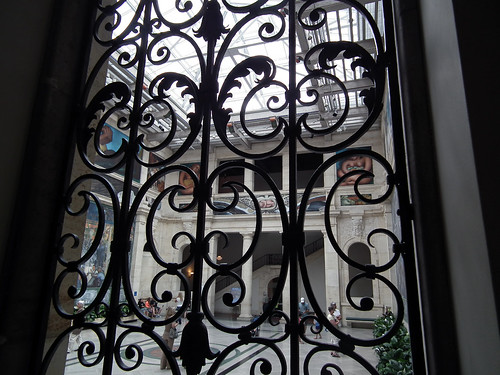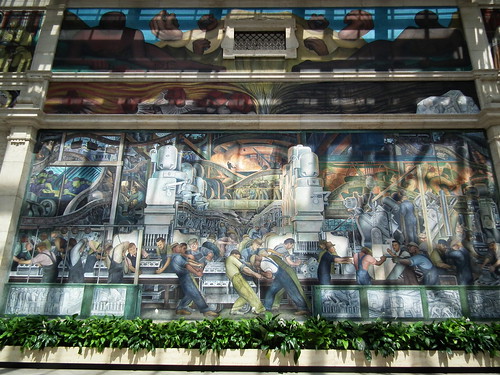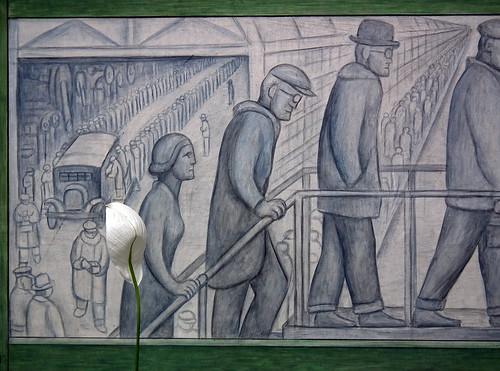To contact us Click
HERE
It's an odd bit of nomenclature, the difference in implication in theexpressions "Christian musician" and "Jewish musician." To call someonea Christian musician is taken to mean an artist whose material dealswith religious and spiritual matters. Christian music is a recognizedgenre, even with its own
Billboardcharts. However, to call someone a Jewish musicians refers only totheir religious background but says nothing about content of theirsongs. To talk about Jewish musicians, the default assumption issecular music by people who happen to be Jewish.
All of which boils down to this: don't approach Steven Lee Beeber'sbook
TheHeebie-Jeebies at CBGB's: A Secret History of Jewish Punkexpecting to learn about an unknown subgenre of punk featuring thelikes of a sped-up, angry version of "Kol Nidre," not that anyone isapt to make that mistake. Beeber even makes his outlookexplicit, examining what it means to be Jewish from a cultural ratherthan religious perspective, on par with being Italian, Irish or Indianrather than Catholic or Hindu. He may trot out anecdotes about barmitzvahs as evidence of Lou Reed's religious heritage, but Beeber ismuch more interested in Jews as an ethnic rather than religious group.And the big surprise is that the history of punk includes a lot of Jewsin crucial roles.
Beeber goes far beyond the mere curiosity "outing" Jewish punks. Sure,you know that Joey Ramone was Jewish, but did you guess that TommyRamone is, too? The author even questions his own motivation whenRichard Hell (né Meyers) asks Beeber his point in writingthe book. Beeber examines the common cultural forces that influencedthis set of people. Some manifestations are overt, such as the Ramones'exhortation to eat Kosher salami. Others are more subtle, such as thestatus of Jews as outsiders in American society and rebellion againstparental desires to assimilate via respectable high-paying professions.
The author trips up when he lacks primary sources. Most notably in thechapters on Lou Reed and the reclusive Jonathan Richman, he strugglesto interpret their inspiration through their lyrics and other pressclippings. In doing so, his analysis gets stretched too thin and hiswriting becomes repetitive. In other instances, he worked around hisinability to interview his subjects by drawing on other sources.Richard Hell was suspicious of Beeber's angle and refused to beinterviewed, but Beeber researched Hell's archival materials at NYU forinsights. Joey Ramone died before Beeber began to work on the book, butthose close to Joey were clearly forthcoming about him.
The book's greatest strength is in examining early punk's obsessionwith Nazi Germany. The Ramone's brought it to the forefront with one oftheir most political songs, "Bonzo Goes to Bitburg." But before that,many in the scene used Nazi iconography in their work or collected itprivately. Beeber teases this out, observing the place of thisgeneration of Jews in history. For many, they were just young enough tohave not been directly affected by the Holocaust but just old enough togrow up around those who were. Drawing on Susan Sontag's work in
Notes on "Camp," hetheorizes that the obsession is a manifestation of an ultimatepsychology victory over the Nazis.
Many ethnic groups take justifiable pride in the accomplishments of itsmembers in various fields. But in chronicling the impact of people suchas band managers Danny Fields and Malcolm McLaren, CBGB's founder HillyKristal, Chris Stein of Blondie and Lenny Kaye of the Patti Smith Groupas well as lesser lights in the punk spectrum, Beeber assembles acompelling argument. The Jewish experience provided a unique influenceon this group of people, and without this cluster of Jews, punk as weknow it would not exist.




 More images on the Vermont Standard Gallery page: Hartland Farmers Market. Check out the newspaper too!
More images on the Vermont Standard Gallery page: Hartland Farmers Market. Check out the newspaper too!






